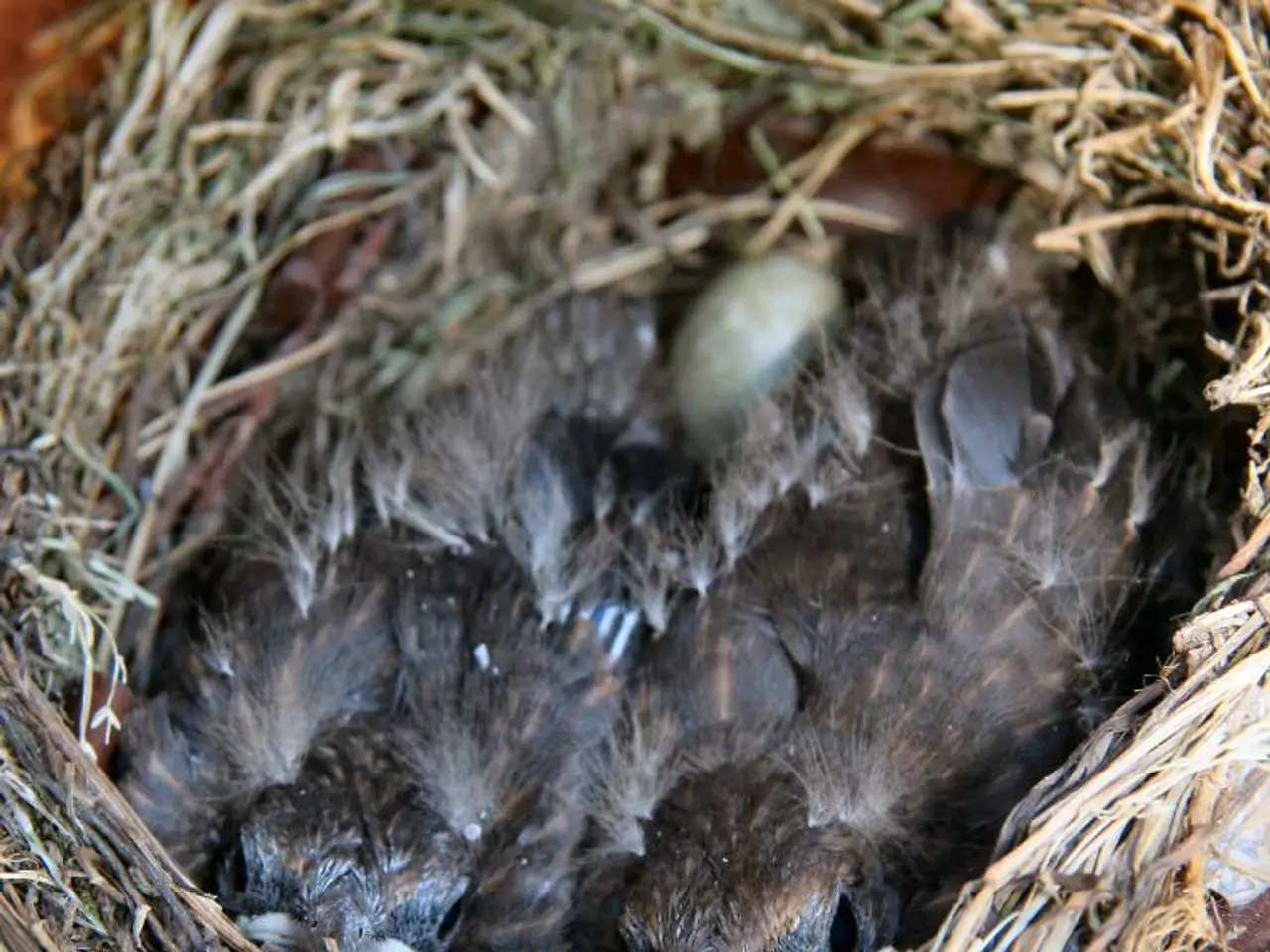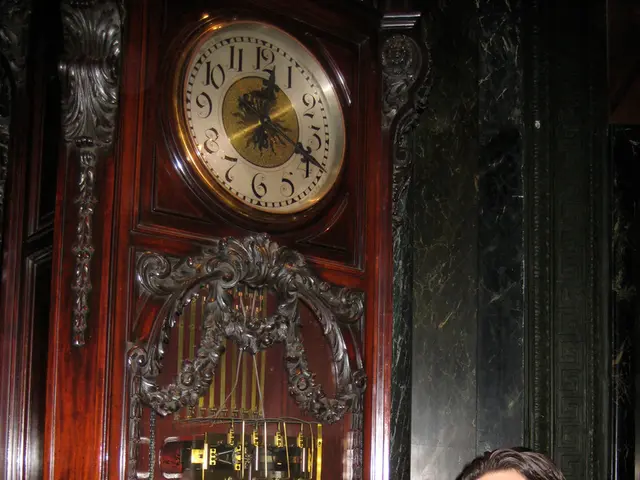The Fascinating Mating Practices of Birds: Examining the Reproductive Habits of Aviary Creatures
In the captivating world of birds, the process of reproduction is as intriguing as their vibrant plumage and melodious songs. One key aspect of this process is the cloacal kiss, a unique method of sperm transfer that is common among most bird species.
The cloacal kiss involves a brief pressing together of the male and female birds' cloacas, allowing the male to transfer sperm to the female without penetration. This contact is typically very quick, lasting only a few seconds during mating.
Both male and female birds have a cloaca, a common external opening for the digestive, urinary, and reproductive tracts. Before the cloacal kiss, birds engage in courtship behavior involving visual, auditory, or chemical signals to attract mates. After sperm transfer, sperm move through the female’s reproductive tract where fertilization occurs internally. The fertilized egg then develops inside the egg before the female lays it.
This process is typical for a variety of bird species, including eagles, hummingbirds, and owls. Understanding the bird mating process provides a fascinating look at the avian life cycle and highlights the importance of conserving natural habitats.
Reproductive success is crucial for the health of a bird population. All bird species share incubation duty between them, using body warmth to keep the eggs at an appropriate temperature. Nests, where birds deposit their eggs, can be diverse across species, with weaver birds and bowerbirds known for their ability to build lovely and sturdy nests.
Climate and food availability play a role in bird mating schedules. Spring and early summer is the period in which many birds mate due to hormonal changes induced by growing day length. After mating, the female initiates egg laying, and chicks are typically brooded by one or both parents post-hatch.
However, human influence, such as urbanization, pollution, and deforestation, can impact bird mating. Some birds, such as cuckoos, lay their eggs in the nest of another species for them to raise.
Birdsong is an important part of courtship behavior, with males often singing to broadcast their strength, territory, and genetic fitness. Bright colors in male birds can indicate health and good genes. The peacock, for instance, is a famous example of a bird that uses visual displays to attract females, with its flashy tail feathers.
In some bird species, males have penises that aid in sperm transfer, such as ducks, geese, and swans. Lekking, a unique mating behavior in Birds of Paradise, where males congregate in mating arenas to deliver fancy dances and displays, is another intriguing aspect of bird mating.
Parthenogenesis, reproduction without fertilization, is rare in birds but occurs in a small number of species. Albatrosses, for example, tend to pair for life. Volatile climates or habitat shifts can throw off the courtship schedule.
Birds are diverse animals, and their mating displays vary from complex courtship displays to cooperative breeding and brood care. Watching a video on how birds mate can help you understand the mating ritual, from courtship to copulation, in motion.
By understanding the bird mating process, we gain a deeper appreciation for these fascinating creatures and the importance of conserving their habitats for future generations.
- Ornithology, the study of birds, encompasses the exploration of not only their vibrant plumage and melodious songs but also their reproductive processes, such as the unique cloacal kiss found in various bird species.
- Birdwatching can provide a captivating glimpse into the health-and-wellness aspect of avian life, as witnessing a cloacal kiss or observing the intricate courtship behavior of birds offers a portal into their lives and the importance of conserving their natural habitats.
- The science of ornithology delves into the diversity of bird species and their mating rituals, from the striking visual displays of Birds of Paradise to the elusive clues hidden in the flashy tail feathers of peacocks, all contributing to a more profound understanding of these remarkable creatures and the need for their habitat preservation.




